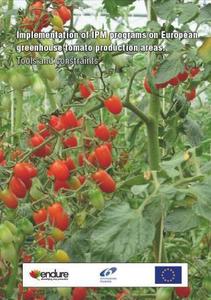Europe
October 26, 2010
 A 46-page book written by ENDURE’s tomato case study team and published by ENDURE’s Spanish partner, the Universitat de Lleida in Catalonia, can now be downloaded free of charge from the Catalonian library of research documents. The book offers an in depth and wider ranging version of the From Science to Field leaflet produced by the team, and examines the tools and constraints affecting the implementation of Integrated Pest Management (IPM) programmes in European greehouse tomato production areas.
A 46-page book written by ENDURE’s tomato case study team and published by ENDURE’s Spanish partner, the Universitat de Lleida in Catalonia, can now be downloaded free of charge from the Catalonian library of research documents. The book offers an in depth and wider ranging version of the From Science to Field leaflet produced by the team, and examines the tools and constraints affecting the implementation of Integrated Pest Management (IPM) programmes in European greehouse tomato production areas.
Written by researchers from France, Germany, The Netherlands and the UK, in addition to the Spanish scientists, it pays special attention to whiteflies and the viruses they transmit. In particular it identifies two whitefly species as the main pests of tomato in Europe: Bemisia tabaci and Trialeurodes vaporariorum .
The former is a vector for the viruses causing tomato yellow leaf curl disease (TYLCD) and is identified as one of the principal drivers of chemical control in greenhouse tomato crops.
However, confirmed cases of resistance to almost all insecticides have been reported, strengthening the case for IPM based on biological control. The team has identified inoculative releases of the parasitoids Eretmocerus mundus and Encarsia formosa and/or the polyphagous predators Macrolophus caliginosus and Nesidiocoris tenuis as the mainstays of the biocontrol approach.
There remain, though, some limitations for wider implementation and the book identifies these along with some research priorities for the promotion and improvement of IPM based on biocontrol.
Download the book, Implementation of IPM programmes on European greenhouse tomato production areas.
Download the tomato case study leaflet: Evaluation of Tools to Manage Whiteflies in Europe:
Tomato Case Study Guide Number 1 [pdf - 534.90 kB]